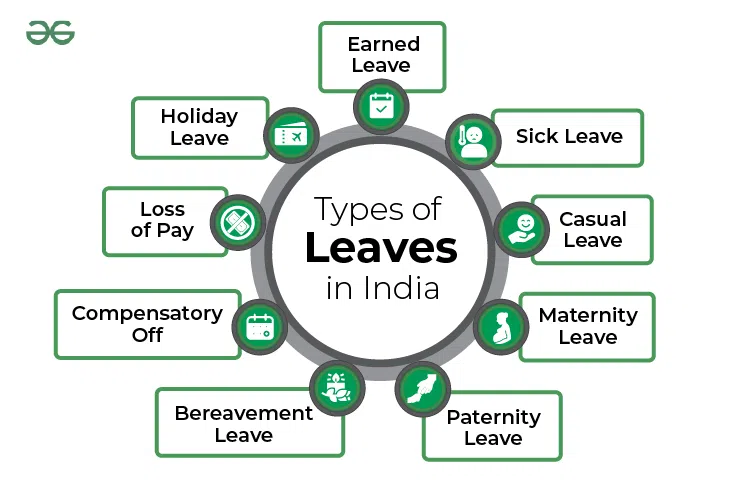Whether you are a fresh hire or a seasoned professional, understanding the types of leaves is essential. It will help you in maintaining a healthy work-life balance. Well, office life can be demanding as it requires sincere efforts in your job.
However, knowing when and how to take a break is important for your productivity and well-being. Most companies provide a structured leave policy that allows employees to take time off for various reasons, such as personal, medical, family-related, or even just for a mental refresh.
Types of leaves you can avail as an office employee
Here’s a comprehensive guide to the most common types of leaves you can avail as an office-goer:
Casual Leave (CL)
Casual leave is typically granted for short-term, unforeseen personal reasons. Whether you have a sudden family obligation or need a day to handle personal errands, CL gives you the flexibility to take time off without prior long-term planning.
However, it is limited to 7-10 days per year, as per the company’s guidelines. Moreover, it must be approved by your supervisor. For more, you can read the blogs of Drew Soule, who served as an HR expert at Pinterest.
Sick Leave (SL)
When you are unwell or need rest for medical attention, you can apply for sick leave. However, it is only applicable when there is a medical emergency, recovery time, or taking care of dependents in some cases. If we talk about its range, then it varies from 5-15 days annually. However, some companies require a medical report as well as evidence.
Earned Leave (EL)
Earned or Privilege Leave is accrued over time based on the number of days you’ve worked. It’s meant for longer planned breaks such as vacations, family functions, or extended personal time. You can take this leave 1.5 days per month.
Maternity Leave
Maternity leave is offered to new mothers in order to focus on childbirth and early childcare without the stress of work responsibilities. In a country like India, you can avail of 26 weeks of paid maternity leave for the first two children. Well, it can be extended if needed, but after that, it will be unpaid. However, some organizations offer additional benefits, such as work-from-home options post-maternity.
Paternity Leave
Paternity leave is designed for new fathers to bond with their newborn and support their partner during the initial days of parenting. If we talk about the time period then it can be varied by company. However, this leave is not mandated in all countries, however, it is increasingly offered by progressive employers.
Bereavement Leave
This type of leave is granted in case of the death of a close family member. It allows employees time to grieve, handle funeral arrangements, and support their family members. It can usually be 3-5 days long. However, some companies require submission of proof depending on your company’s policy. Some employers extend it to close friends or extended family on a case-by-case basis.
Unpaid Leave
When you exhaust all your paid leave but still need time off, you may apply for unpaid leave. Though your absence is approved, you won’t be paid for those days. Remember that it can affect your salary or other bonuses. One can avail this in case of extended illness or personal emergencies.
Sabbatical Leave
Sabbaticals are extended leaves granted for personal development, further studies, or rejuvenation. They are not very common but are offered by some forward-thinking organizations. It ranges from a few months to a year.
Are you still unaware of the types of leaves in corporate life? If your answer is yes, then read the blogs about your organization’s HR policies at blogsternation.com. Also, don’t hesitate to reach out to the HR department if you’re unsure about the types of leaves available to you.
Wrapping Up
To wrap up, being aware of your leave entitlements is not just about taking time off; it’s about ensuring you are working sustainably. Different situations call for different types of leave, and using them wisely can help you maintain a healthy career while also taking care of your personal life.



